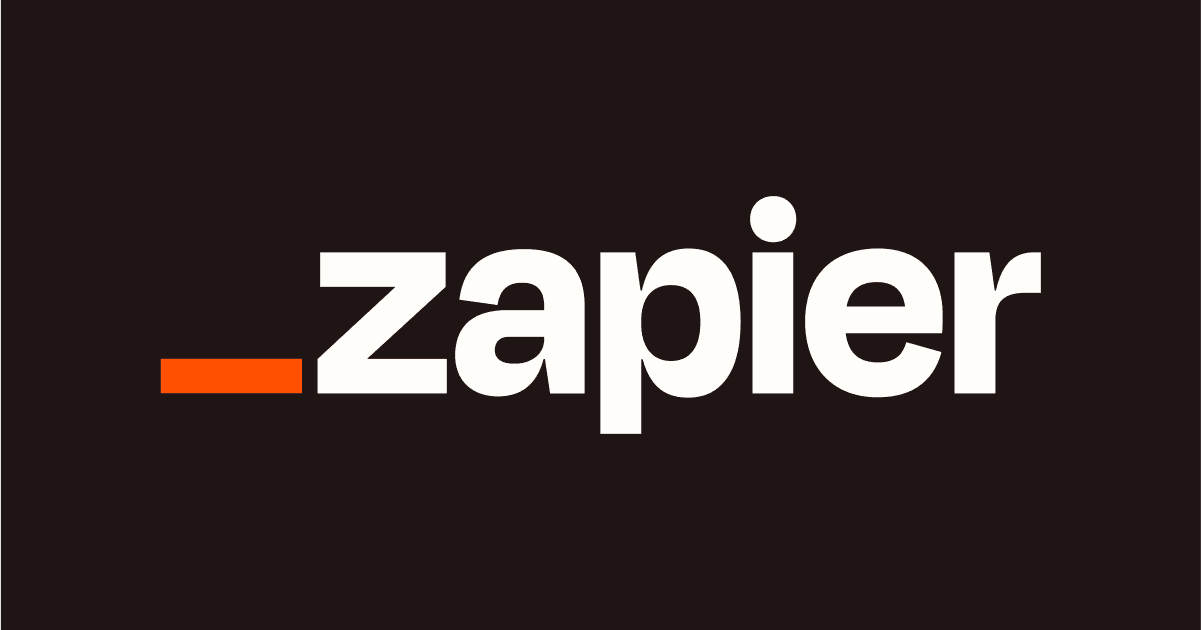
Zapier: Complete Buyer's Guide
The leading no-code automation platform for ecommerce businesses
Zapier positions itself as the leading no-code automation platform for ecommerce businesses, connecting over 7,000 applications through AI-powered workflow automation that eliminates manual data entry and streamlines operations across the entire customer journey [40][46][41][47][44][45].
Market Position & Maturity
Market Standing
Zapier occupies a dominant position in the no-code automation market, serving millions of users across various business sizes with established market presence and operational maturity [51][54].
Company Maturity
The platform demonstrates operational stability through 99.9% uptime guarantees for enterprise contracts and comprehensive support infrastructure including 24/7 chat support on Pro+ plans [57][51][56].
Growth Trajectory
Market evidence suggests sustained growth in automation adoption, with AI budgets projected to grow 18.6% annually, reaching $45.74 billion in retail by 2032 [4][8].
Industry Recognition
The platform's established market presence and extensive customer base provide evidence of industry validation, though specific awards, certifications, and analyst recognition require additional verification from current sources.
Strategic Partnerships
Zapier's integration partnerships with major ecommerce platforms including Shopify, WooCommerce, and Mailchimp demonstrate strategic ecosystem positioning that facilitates customer acquisition and retention [44].
Longevity Assessment
The platform's mature feature set, extensive integration ecosystem, and established customer base provide strong evidence supporting long-term viability and continued operation in the automation market.
Proof of Capabilities
Customer Evidence
Zapier demonstrates proven effectiveness through multiple documented customer success stories across various ecommerce operations, with case studies reporting significant cost savings and operational efficiency gains [51][53].
Quantified Outcomes
Documented implementations show measurable improvements across multiple ecommerce operations, with case studies reporting significant reductions in testing time and improved workflow performance [51].
Case Study Analysis
Customer success evidence demonstrates that phased implementation approaches show higher success rates than rushed deployments, with organizations starting with inventory-triggered automations before scaling to marketing campaigns achieving optimal results [44][46].
Market Validation
The platform serves millions of users across various business sizes, providing evidence of market acceptance and operational scalability [51][54].
Competitive Wins
Zapier's 7,000+ app integrations provide broader connectivity than competitors like Tray.io and Make, enabling comprehensive workflow automation that competitors cannot match [43][51].
Reference Customers
While specific enterprise customer names require verification, documented case studies demonstrate successful implementations across various industries and use cases, with particular strength in ecommerce operations requiring cross-platform data synchronization [51][53][44].
AI Technology
Zapier's technical foundation combines traditional workflow automation with emerging AI capabilities through a three-tier architecture: AI Agents for automated decision-making, Natural Language Processing for conversational workflow creation, and Generative AI integration through ChatGPT APIs for content automation [47][51][42][53].
Architecture
Zapier's cloud-native architecture supports 7,000+ app integrations through standardized API connections, enabling comprehensive workflow automation across diverse technology stacks [43][51]. However, high-volume implementations may face API throttling challenges, with execution delays for workflows processing 10,000+ tasks daily [43][55].
Primary Competitors
Tray.io focuses on enterprise API orchestration with superior technical capabilities for complex requirements, while Make (Integromat) offers more advanced logic builders for sophisticated workflow design [43][55].
Competitive Advantages
Zapier's 7,000+ app integrations provide broader connectivity than most competitors, enabling comprehensive workflow automation across diverse technology stacks [43][51]. The AI Zap Creator offers natural language workflow creation capabilities that competitors like Tray.io and Make lack, providing significant differentiation in ease of use [42][47][43][55].
Market Positioning
Zapier occupies a unique position combining broad integration capabilities with AI-powered automation, though buyers should distinguish between enhanced automation and genuine AI functionality when evaluating competitive alternatives [51][55].
Win/Loss Scenarios
Organizations should evaluate Zapier when requiring extensive app integrations, no-code AI capabilities, and rapid deployment for standard ecommerce workflows [43][51][42][47]. Alternative solutions may be preferable for enterprises requiring advanced API orchestration, complex logic building, or specialized industry compliance features [43][55].
Key Features

Pros & Cons
Use Cases
Integrations
Pricing
Featured In Articles
Comprehensive analysis of Automation for Ecommerce for Ecommerce businesses and online retailers. Expert evaluation of features, pricing, and implementation.
How We Researched This Guide
About This Guide: This comprehensive analysis is based on extensive competitive intelligence and real-world implementation data from leading AI vendors. StayModern updates this guide quarterly to reflect market developments and vendor performance changes.
57+ verified sources per analysis including official documentation, customer reviews, analyst reports, and industry publications.
- • Vendor documentation & whitepapers
- • Customer testimonials & case studies
- • Third-party analyst assessments
- • Industry benchmarking reports
Standardized assessment framework across 8 key dimensions for objective comparison.
- • Technology capabilities & architecture
- • Market position & customer evidence
- • Implementation experience & support
- • Pricing value & competitive position
Research is refreshed every 90 days to capture market changes and new vendor capabilities.
- • New product releases & features
- • Market positioning changes
- • Customer feedback integration
- • Competitive landscape shifts
Every claim is source-linked with direct citations to original materials for verification.
- • Clickable citation links
- • Original source attribution
- • Date stamps for currency
- • Quality score validation
Analysis follows systematic research protocols with consistent evaluation frameworks.
- • Standardized assessment criteria
- • Multi-source verification process
- • Consistent evaluation methodology
- • Quality assurance protocols
Buyer-focused analysis with transparent methodology and factual accuracy commitment.
- • Objective comparative analysis
- • Transparent research methodology
- • Factual accuracy commitment
- • Continuous quality improvement
Quality Commitment: If you find any inaccuracies in our analysis on this page, please contact us at research@staymodern.ai. We're committed to maintaining the highest standards of research integrity and will investigate and correct any issues promptly.